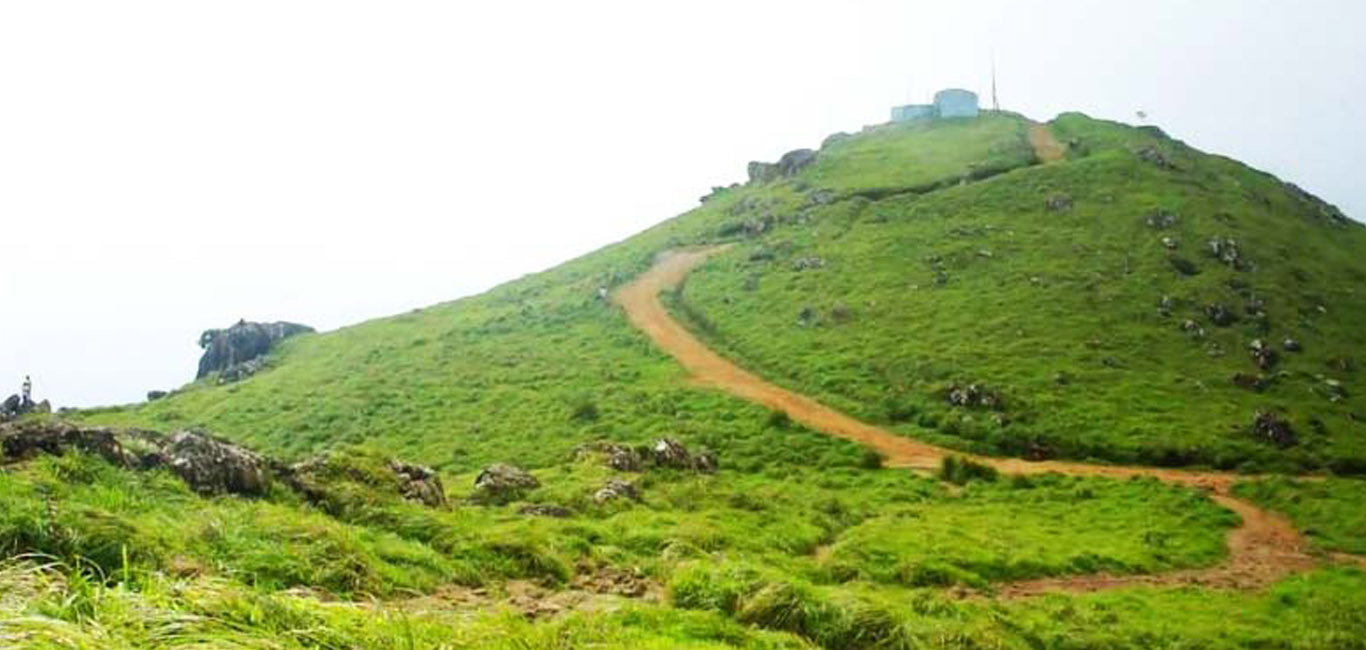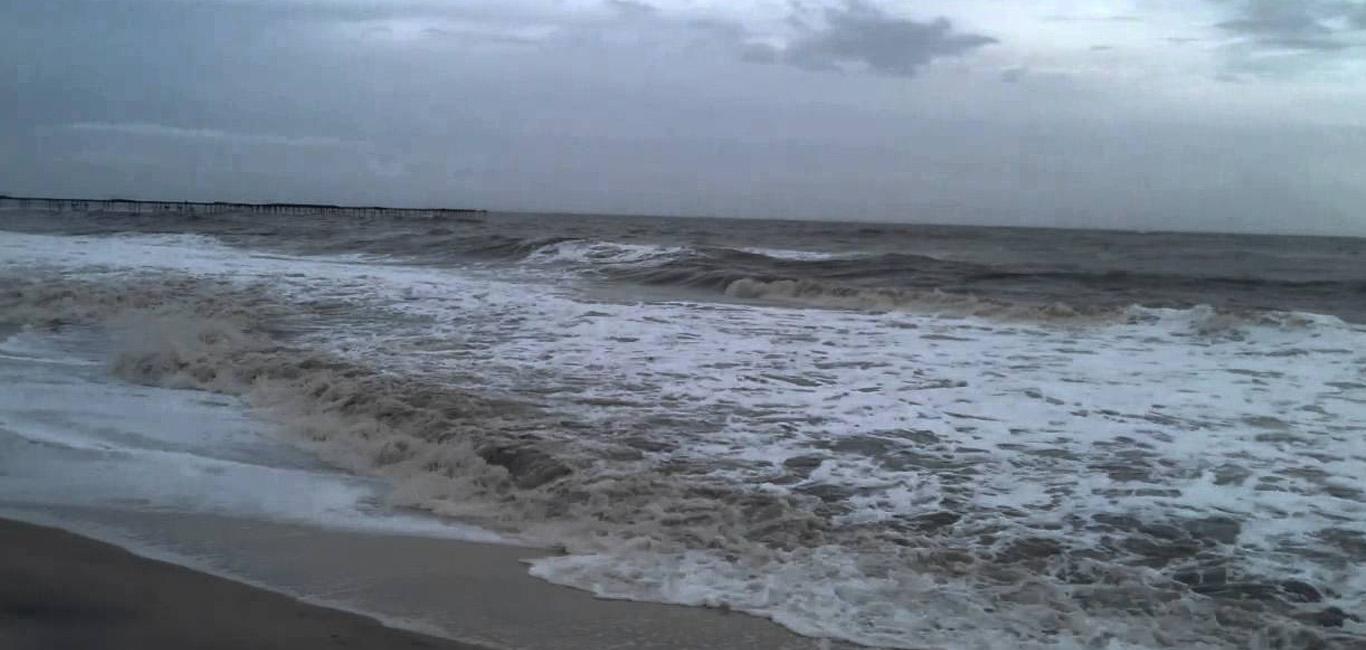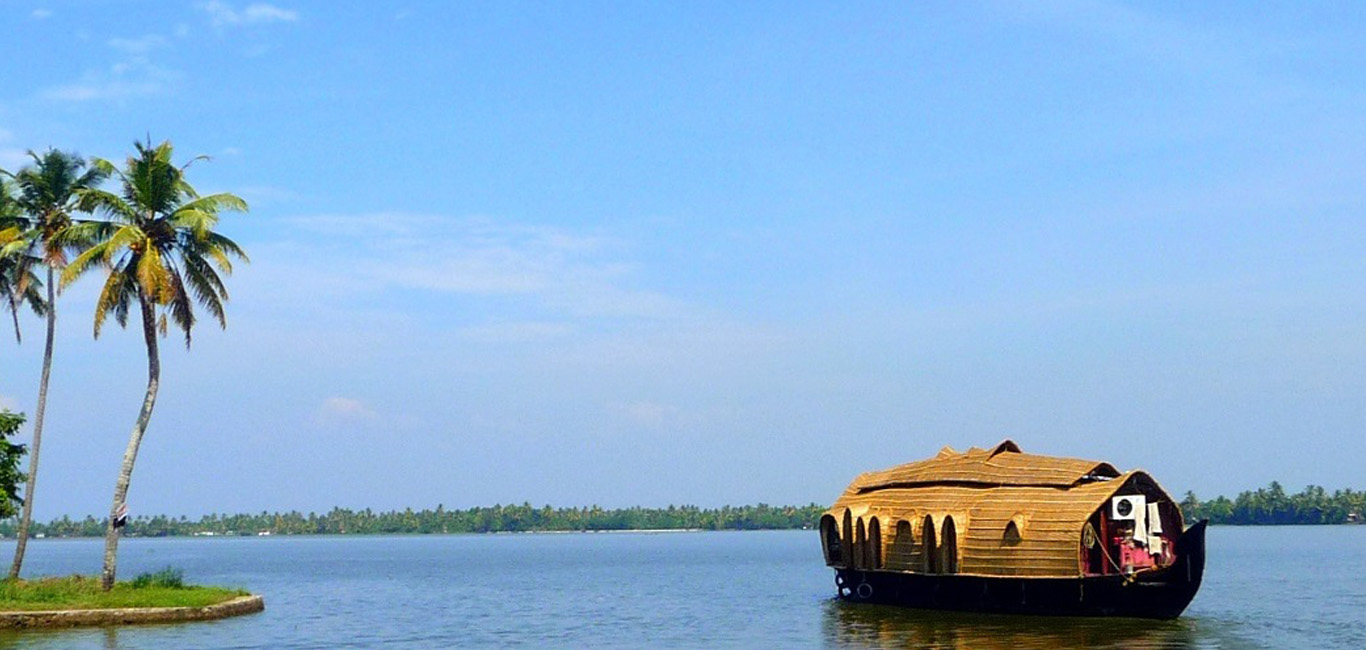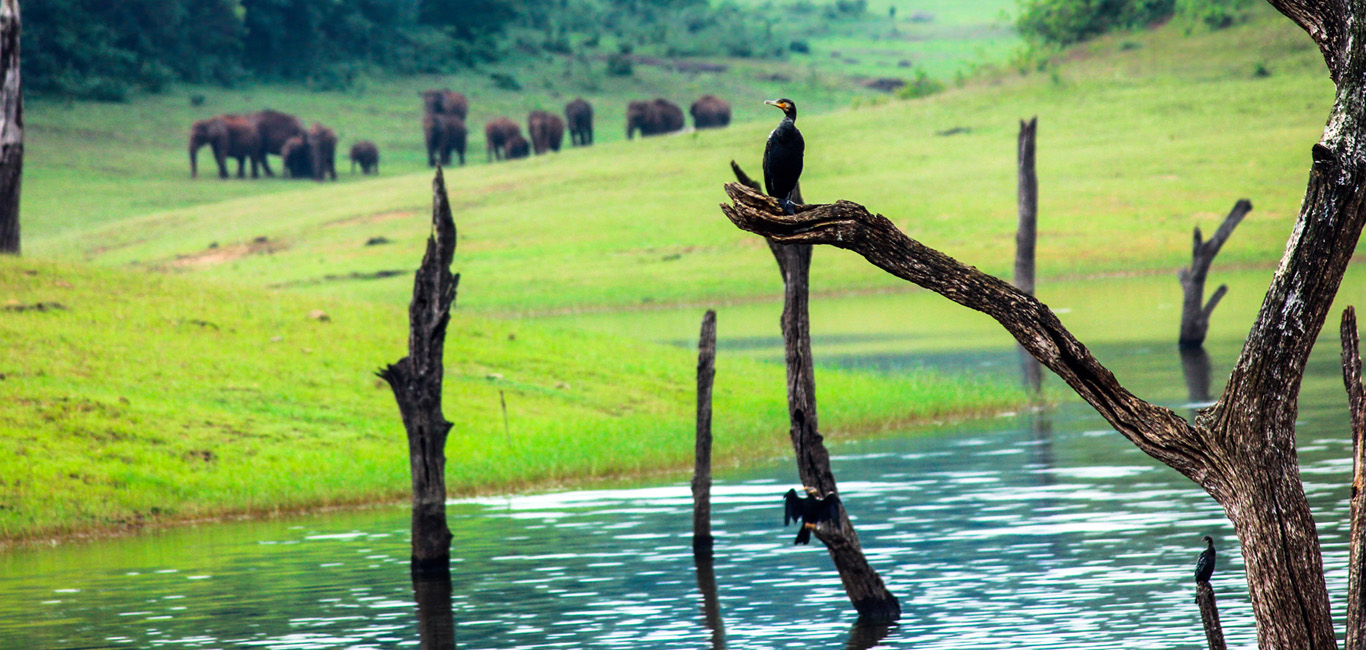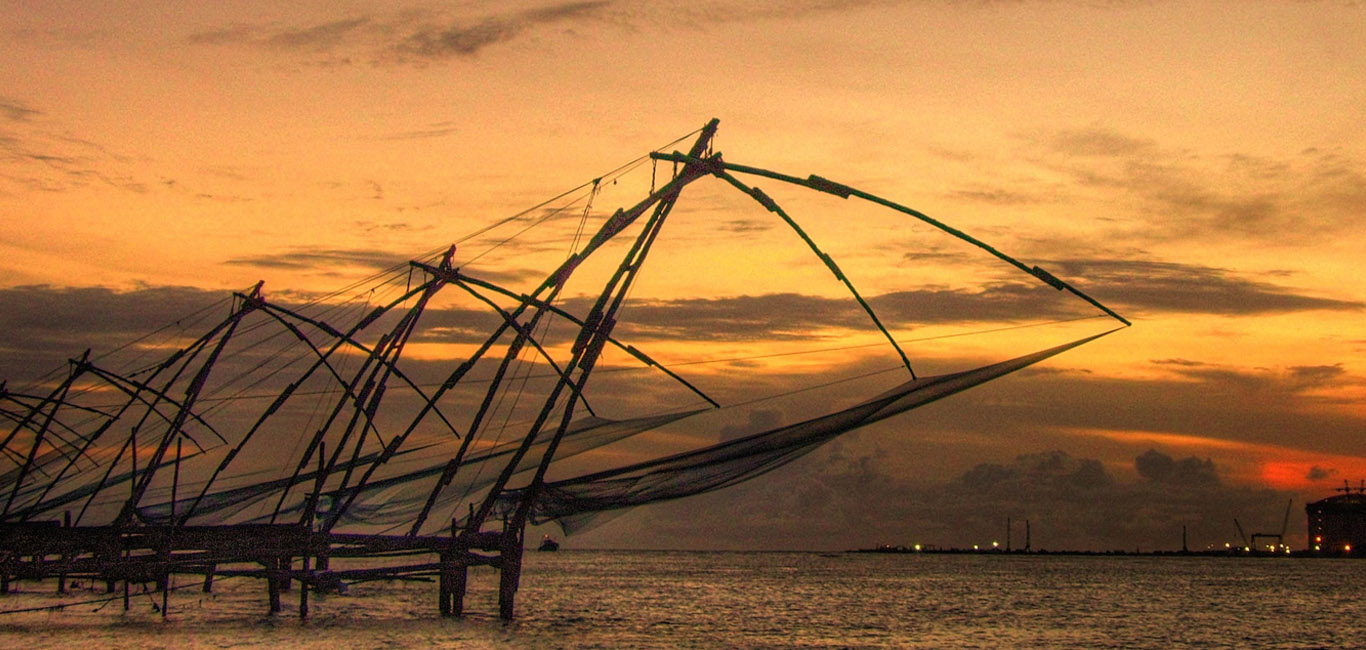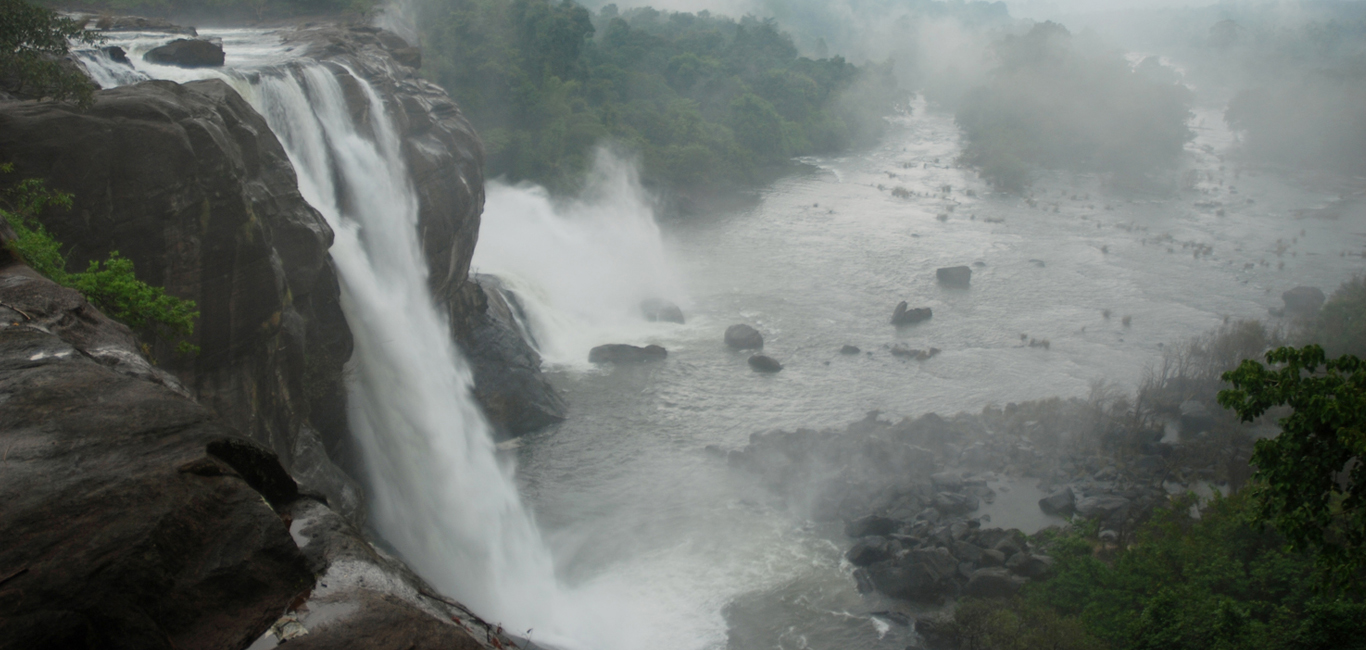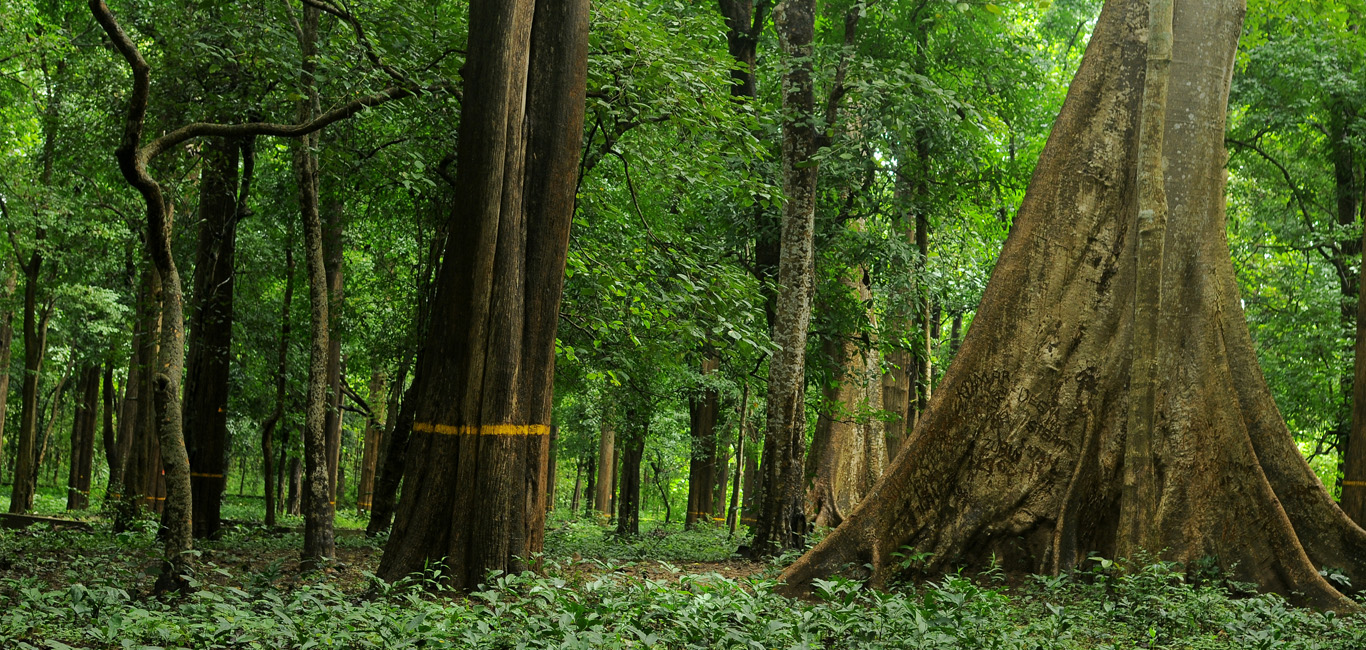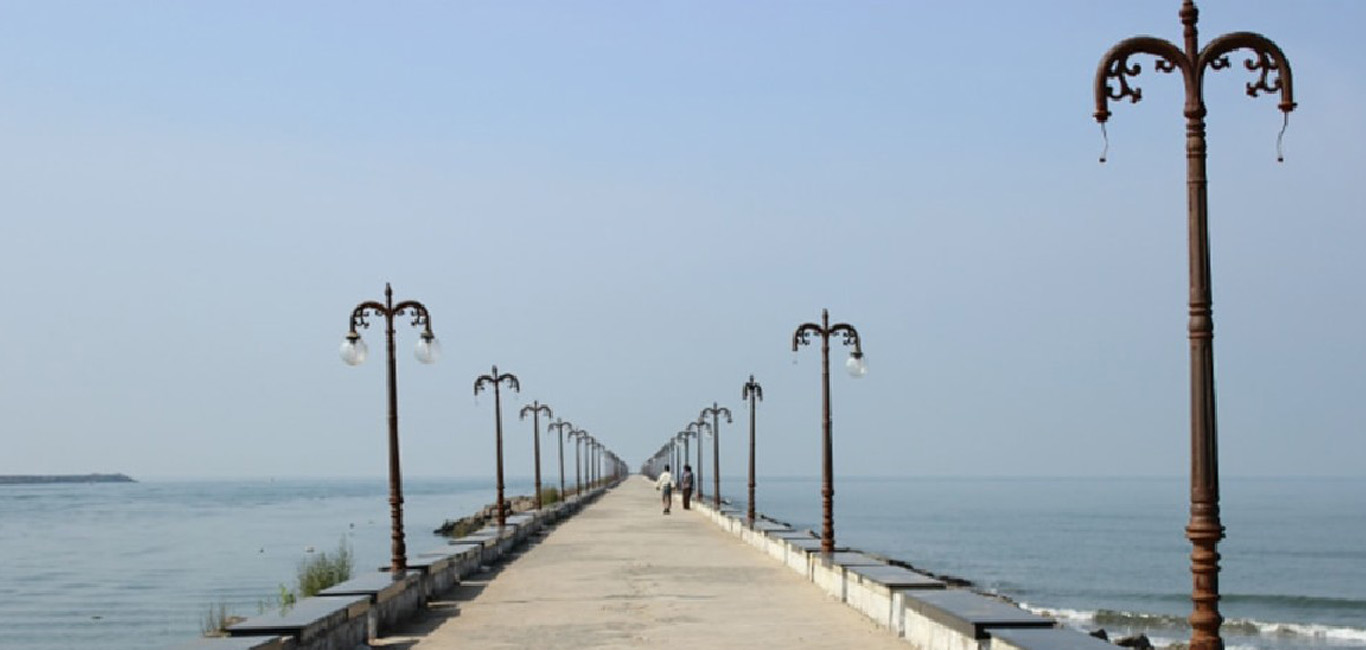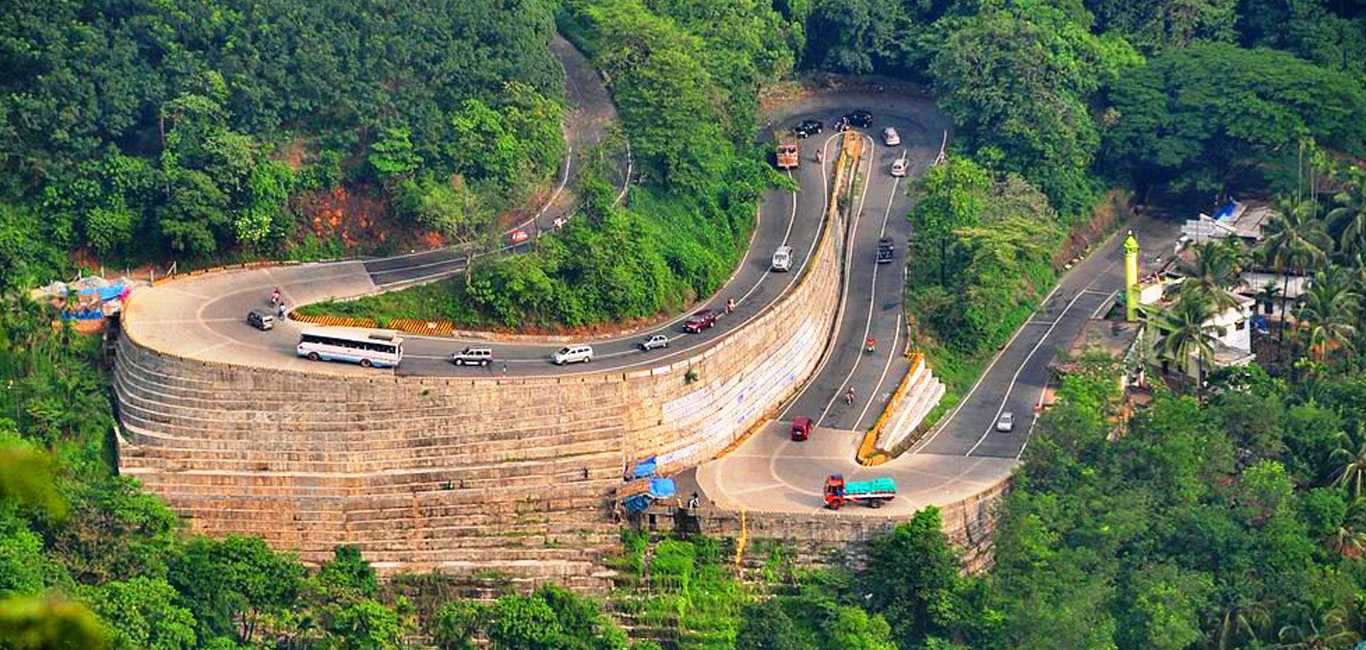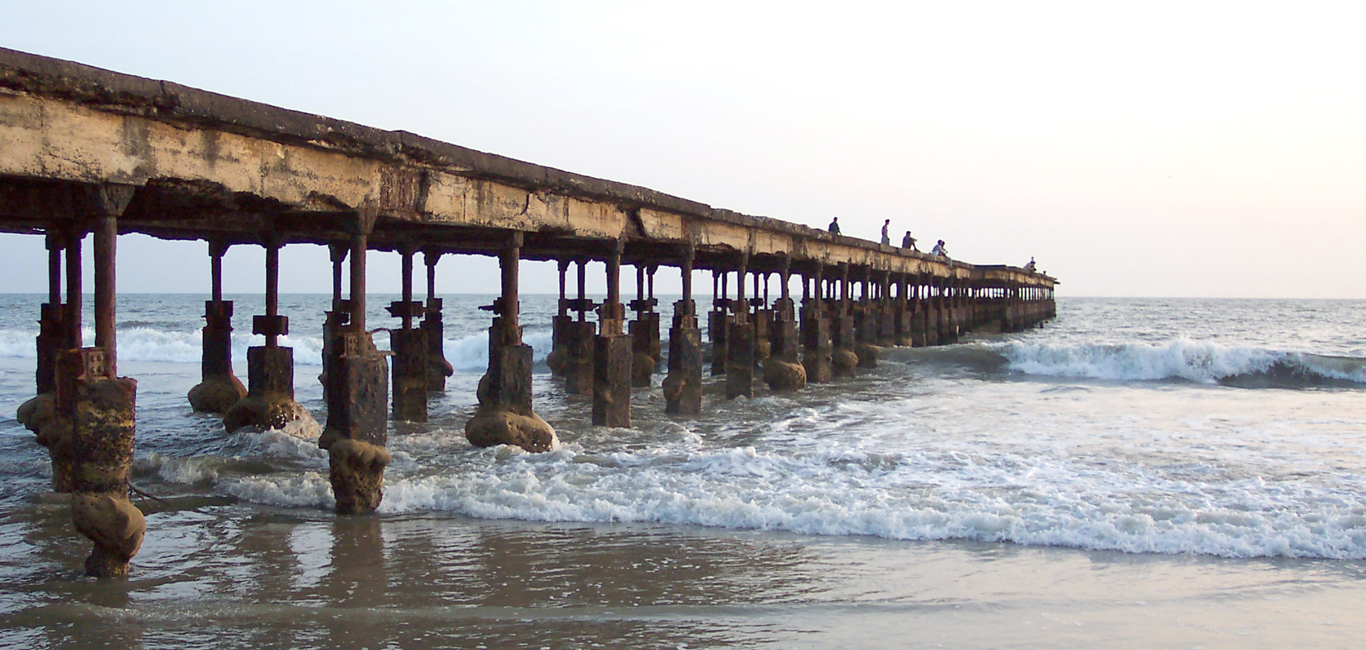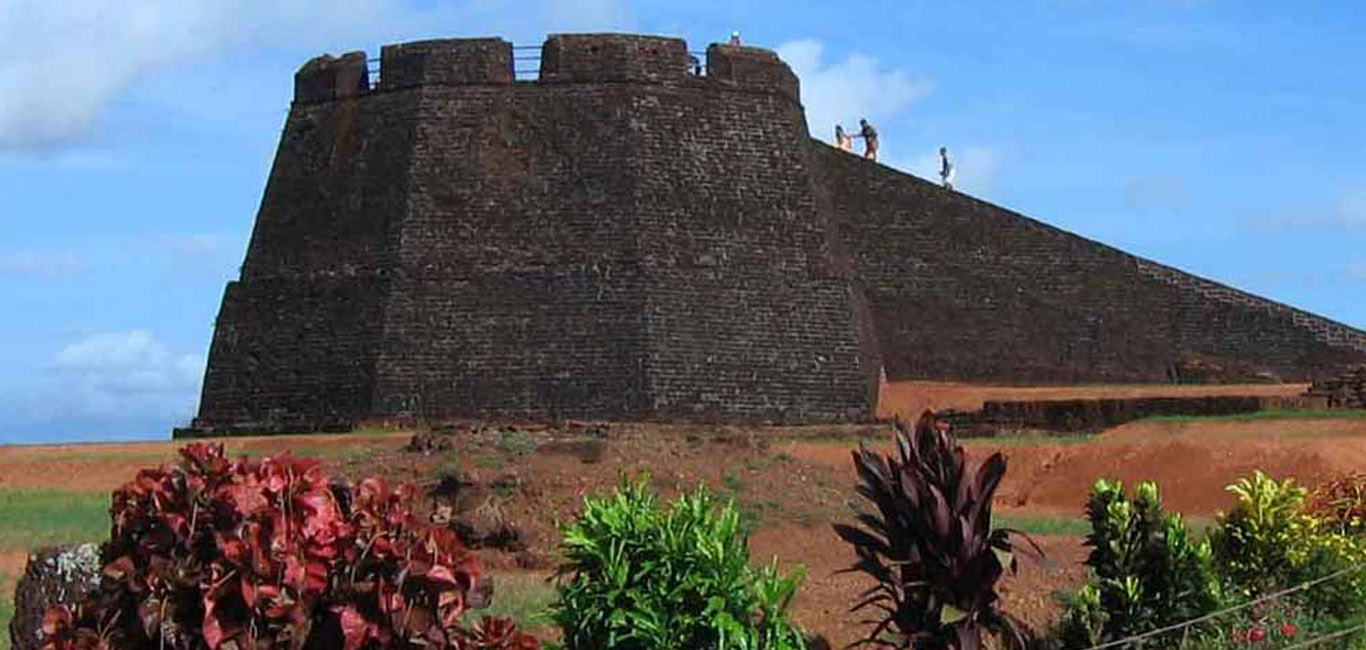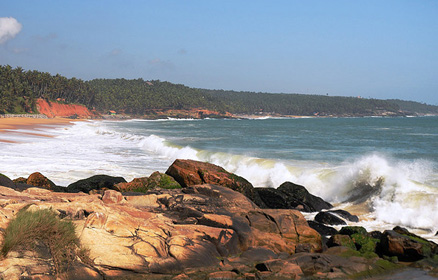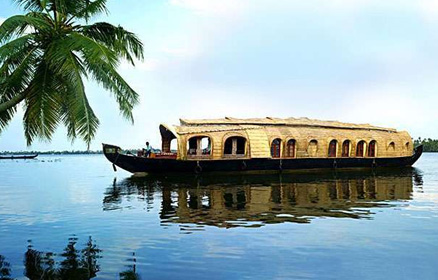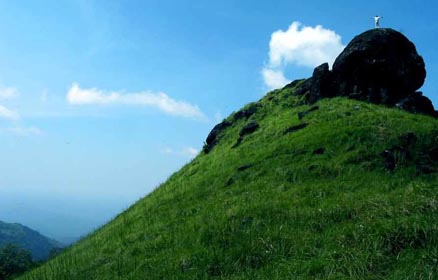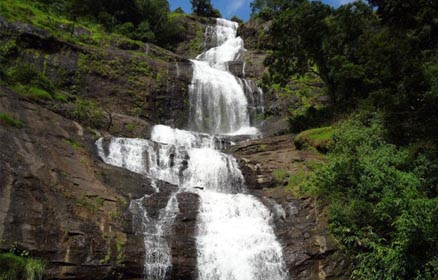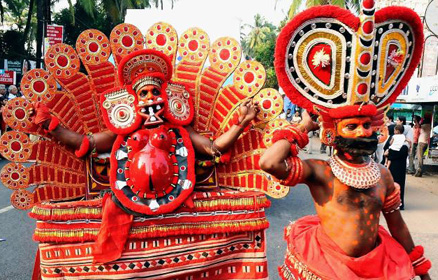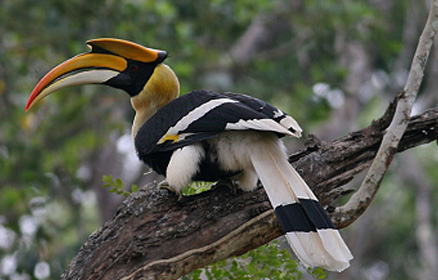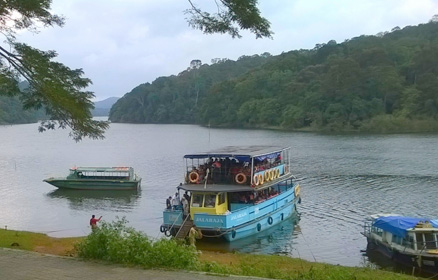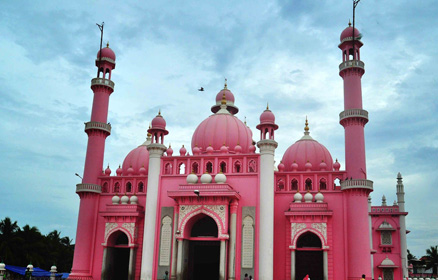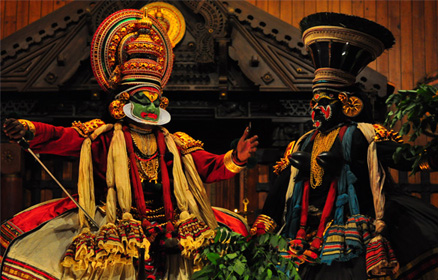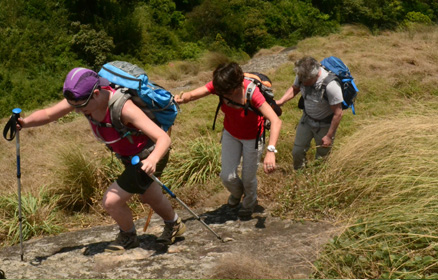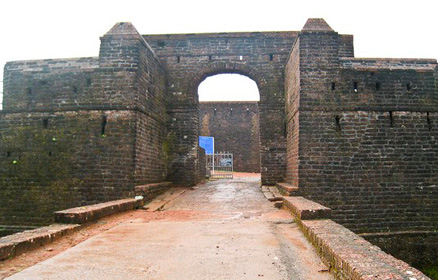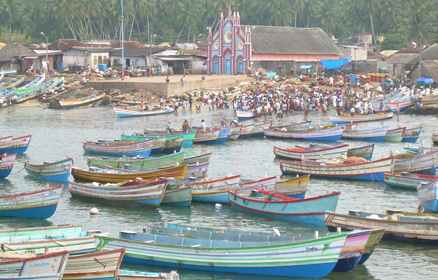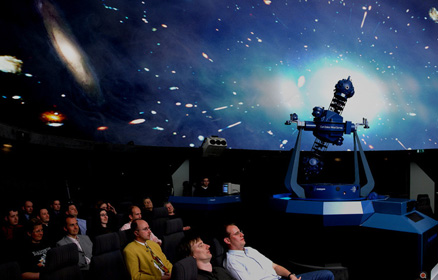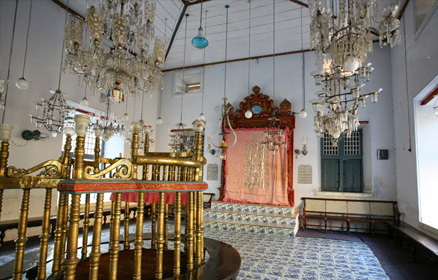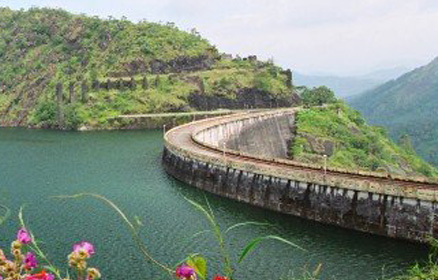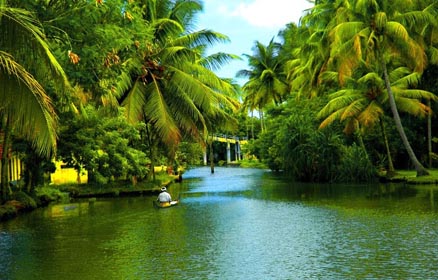
Palakkad
Celebrated as the granary of Kerala, Palakkad is a vast expanse of verdant plains interspersed with hills, rivers, mountain streams and forests. The gateway to Kerala from the North, a 40 kilometre break in the mountains known as the Palakkad Gap gives access to this land situated at the foot of the Western Ghats. The pass acts as a corridor between Kerala and neighbouring Tamil Nadu and played a major role in the trade contacts between East and West coasts of peninsular India. Deriving its name from the Malayalam words Pala (Alsteria scholaris) and Kadu (forest), this place was once a beautiful stretch of forest covered with the sweet-scented flowers of the Pala tree. A potpourri of Tamil and Kerala culture, some of the finest Carnatic musicians hail from this region which continues to be a largely agrarian society.
Place to Visit
Parambikulam Wildlife Sanctuary: (110 km from Palakkad) Sprawled across 285 sq.km, the Parambikulam Wildlife Sanctuary is home to many rare wild animals. The tree house in the reserve forest area in Thunakkadavu has to be booked in advance. One of the oldest and the largest teak trees in the world can be seen here. The Kannimara Teak with a girth of 6.57 m and a height of 48.5 m, said to be around 360 years old, is a remnant of the wild teak that grew in this area which now houses cultivated teak plantations. Boating/cruising facilities are available at the Parambikulam Reservoir. The Rest Houses of the State Forest Department at Thunakkadavu, llikkal and Anappady offer accommodation. Permitting authority: Divisional Forest Officer, Parambikulam, Thunakkadavu. Ph: 04253-24025, 245005 www.parambikulam.org
Malampuzha Garden: (10 km from Palakkad) This famous picnic spot, which comprises of a dam and beautifully landscaped gardens, is situated on the lower hills of the Western Ghats.
The garden (Open 10.00-06.00 hrs) Penetrated with lush lawns, flower beds and fountains, the key attractions include a rose garden and an aerial ropeway. Ph: 2815280 The dams and gardens are illuminated on Saturdays, Sundays and national holidays from 07.00-08.00 hrs. On other days they are illuminated on request for a fee. Rock Garden: (Open 10.00-06.00 hrs) Designed by Shri. Nekchand, this is the only rock-cut garden in South India. Ph: 2815140
The reservoir: Boating and fishing facilities are available here. Pedal boats, row boats, water scooters and motor boats can be hired, from 1000-1800 hrs A well maintained swimming pool (Tuesday holiday), a fresh water aquarium (Open 11.00-08.00 hrs, 01.00-09.00 hrs on holidays), a snake park (Open 08.00-07.00 hrs) and a children’s park are other add-ons.
Silent Valley National Park: (40 km northwest of Mannarkad) The 89.52 sq.km national park is believed to be the sole surviving bit of evergreen forest in the Sahya Ranges. The peculiarity of the Silent Valley Forest is that it is even devoid of the chirping of cicadas. Vehicular transport is possible only up to Mukkali, nearly 24 km from the park. The rest of the way has to be covered by foot, up to the source of Kunthipuzha, which flows through the valley before merging into the Bharathapuzha River. The closest to a virgin forest in the entire Western Ghats, the Silent Valley National Park is home to India’s last substantial stretch of tropical evergreen forests. Its difficult terrain and remoteness shelters a large number of wild animals.
Permitting authority: Asst. Wildlife Warden, Silent Valley National Park, Mukkali. Ph: 04924-253225
Tipu’s Fort/ Palakkad Fort: (Open 0800-1800 hrs) The old granite fort situated in the very heart of Palakkad town is one of the best preserved in Kerala. It was built by Hyder Ali of Mysore in 1766. The fort was taken over and modified by the British in 1790. Well preserved by the Archaeological Survey of India, there is an open-air auditorium and a small museum inside the fort. The landscaped environs of the fort now hosts a children’s park and a temple known as kota ambalam (fort temple).
Permitting authority: Forest Range Officer, Olavakkode Ph: 0491-2552815
Nelliyampathy: (40 km south of Nenmara and 75 km southeast of Palakkad) This fascinating hill station is at a height of 467 to 1,572 m above sea level. At least 10 hairpin bends have to be negotiated on the Ghat road that passes through the breathtaking evergreen forests of the Sahya Ranges. Seethakundu at Nelliyampathy offers a panoramic view of about one-third of Palakkad. This hill country is the delight of trekkers. The District Tourism Promotion Council of Palakkad provides good accommodation facilities here.
Special Attractions
Attappady: (38 km northeast of Mannarkad) A beautiful synthesis of mountains, rivers and forests, Attappady is of great interest to anthropologists as this is the home of many tribes like the Irulas and Mudugars. The Malleeswaram Peak is worshipped as a gigantic Sivalinga by the tribals who also celebrate the Sivarathri festival with great gusto. A PWD Rest House, and a few private hotels offer accommodation at Agali.
Chinakkathoor Vela: The colourful Chinakkathoor Pooram is held annually at the Sree Chinakkathoor Pooram is held annually at the Sree Chinakkathoor Bhagavathy Temple in Palappuram near Ottapalam. The highlights of the festival include a grand procession of 33 tuskers in the evening and Panchavadyam recitals-the traditional temple orchestra-in additional to various art forms. Tholpavakoothu, a ritualistic shadow puppet show, is presented at the temple premises every evening for 17 days preceding the festival. Another beautiful sight is the procession of sixteen elaborately decorated horse effigies brought ceremoniously to the temple by the devotees.
Chittur Gurumadom: (Thekkegramam near Arikkode) Located on the banks of the River Sokanasini (The destroyer of sorrows), this is a memorial to Thunchath Ezhuthachan, the author of Adhyatma Ramayana, who spent his last days here. A srichakra, some of the idols worshipped by him, a stylus, wooden slippers and a few old manuscripts are exhibited here.
Elephant Care Centre, Shornur: Set up in 2005, this initiative was launched by Nibha Namboodiri to take care of elephants that were either too old to earn their living or survive in the wild. In the absence of sponsors to fund her centre, she opened her home to visitors where one can get a taste of life in an ancestral home with the added advantage of being with an elephant. Living with Karman, as the project called, contributes towards providing care and love to neglected, domesticated elephants.
Fantasy Park: (Open 10.00-06.30 hrs on weekdays and 09.30-07.00 hrs on Saturdays, Sundays and national holidays)-Entrance fee: Adults: Rs. 200 Children between 3-9 yrs: Rs. 150 Ph: 2815122, 2815124
Kollengode: (19 km South of Palakkad) Kollengode or ‘the abode of blacksmiths, enshrines the pristine beauty rural Palakkad. The Kollengode Palace, the Vishnu Temple and the memorial of the great poet P. Kunhiraman Nair are worth visiting. Seethakundu and Govindamalai Hills nearby are ideal for trekking.
Kottayi: (15 km via Poodur from Palakkad) This tiny village is the native place of the late Chembai Vaidyanatha Bhagavathar, the doyen of Carnatic music. Renowned singers perform music concerts at his memorial in Kottayi Village.
Kunjan Smarakam, Lakkidi: (30 km from Palakkad) Regarded as the creator of Ottan Thullal, Kunjan Nambiar is said to have created this art from on being ridiculed for falling asleep during a Chakyarkoothu performance. He created history with his brand new dance form- a solo dance and a classical satirical art form, which always has an absorbent storyline relevant to contemporary issues. The poet’s house in Killikurissimangalam has been renovated and preserved as a memorial.
Kalari Kovilakom: Built by the seniormost lady of the royal family of Kollengode, 124 years ago, this three-tiered palace is today a reputed centre for Ayurveda. For those serious about understanding the holistic benefits of Ayurveda, Kalari Kovilakam would be an excellent choice.
Maampara Peak: Lying directly in line with the Palakkad Gap, the peak enjoys a gusty gale all the time, in addition to offering an amazing view to visitors. The mountain top presents a view of the reservoir and rivers far below and on clear days, even the towns of Palakkad as well as neighbouring Pollachi and Coimbatore can be seen.
Mangalam Dam: (50 km from Palakkad) A popular picnic spot, the dam is built across the Cherukunnath River, a tributary of the Mangalam River.
Mayiladumpara: (25 km south of Palakkad and 40 km east of Cheruthuruthy) This grove at Nedungathpara takes its name from the large number of peacocks (mayil) found here that can be sighted often at dawn and dusk. About 200 peacocks inhabit the extensive forests of the Mayiladumpara Sanctuary at Nedungathpara near Palakkad. Not bound by gates, the sanctuary which has been home to peacocks since ages, allows free access to visitors.
Meenvallam Waterfalls: Originating from the Thuppanadu River, these falls drop step by step from a height of 5 to 45 metres. Ph: 04924-240705, 9249787624 Other attractions: Mannamada, Ponpara, and Uppukulam waterfalls at Edathanattukara, 55 km from Palakkad; Hanuman Kallu nerar Attappady Gap at the tenth hairpin bend.
Meenkara: (32 km from Palakkad) This picnic spot is the site of a dam across the River Gayathri which flows into the Bharathapuzha.
Olappamanna Mana: (Located at Vellinezhi, Cherplassery) The ancestral home of feudal lords belonging to the priestly Namboodiri Brahmins of Cherplassery, who have made significant contributions in the fields of Kathakali, percussion, classical music, literature, vedic education and Sanskrit learning. This heritage house is patronised by Pattikkamthoti Ravunni Menon who developed the modern Kathakali-Kalluvazhi Chitta. Reputed patrons of the arts and progenies of the clan preserve their heritage including the 300 year old mana.
Ottapalam: (35 km from Palakkad) This temple town is known for its numerous places of worship and their colourful festivals. It is also home to the famous Varikkasseri Mana, where Malayalam films are shot almost round the year.
Pattambi: Situated by the Nila, this small town was once the seat of Sanskrit learning. It hosts the Pattambi Nercha, a festival held in memory of a Muslim saint of Malabar, featuring a grand procession of nearly 100 caparisoned elephants, colourful floats, music concerts like Panchavadyam and Thayambaka and other folk art forms.
Pothundy: (45 km from Palakkad) Situated on the way to Nelliyampathy, the Pothundy reservoir complex is a charming location for picnics and half-day trips.
Ramassery: (8 km from Palakkad) This nondescript village is famed for its special idlis that are quite different from the common South Indian variety. Round and flat, almost shaped like a dosa, these idlis are extremely soft and delicious. They recipe has been passed down from generation to generation and is a well-kept family secret.
Shornur: One of the most important junctions of the Southern Railway, this small and bustling town has many metal industries.
Siruvani: (46 km north of Mannarkad and 48 km from Palakkad) The reservoir at Siruvani was built for Tamil Nadu by the Kerala Government. Siruvani is also home to certain tribals like the Mudugars and Irulars.
Permitting authority: Divisional Forest Officer, Mannarkad Ph: 04924-222574
Thenari: It is believed that the waters of this natural spring, which flows by the old Sree Rama Temple here, is as sacred as the waters of the Ganges.
Thunchan Gurumadom: (15 km from Palakkad) This is where the 16th century Malayalam poet Thunchath Ramanujan Ezhuthachan lived for some time. It was here that Ezhuthachan translated the two Sanskrit epics, the Ramayana and the Mahabharata, into Malayalam. People call this place the Gurumadom and on Vijayadasami Day, hundreds of children are brought here for a ritualistic initiation to learning.
Vellinezhi: This small hamlet is famous for having produced the maximum number of Kathakali artistes in the entire State. Almost every family in this village, which is the abode of about 50 Kathakali artistes, has at least one artist to its credit.
Places of Worship
Jainamedu Jain Temple: (3 km from the centre of Palakkad, on the southern bank of the Kalpathy River. Open 0700-1030 hrs, 1700-1900 hrs) situated on the western suburbs of Palakkad Town, not far from the railway station, this historic 32 ft long, 20 ft wide granite temple displays images of the Jain Thirthankaras and Yakshinis. The region around the temple, known as Jainamedu, is one of the few places in Kerala where the vestiges of Jainism have survived. Palakkad was once home to a community of 400 Jain families, but only a few families remain today. It is at a Jain house here that poet Kumaranasan wrote his monumental poem Veenapoovu or The Fallen Flower.
Manapullikaavu: (East Yakkara. Open 0600-1030 hrs, 1700-1900 hrs) One of the two major temples in Palakkad besides the Vadakkanthara Shrine, the idol here is swayambu (self-created). The main idol in the sanctum sanctorum was a later installation. Vela Festival in February/March is the main celebration here.
Thiruvalathoor: (8 km from Palakkad on Chittur-Kodumbu road) The ancient temple here has come fine woodwork and stone sculptures. Legend has it that the outer wall of the temple was built by an army of gods who worked at it the whole night but left it unfinished by dawn as they didn’t want to be seen by humans cannot complete this work. The 4,000 stone lamps fixed on the wall and lit up at night is a beautiful sight. Another attraction is the mizhavu- an instrument that is commonly used while performing the art forms of Chakyarkoothu and Koodiyattom, said to the biggest among such existing ones.
Kachamkurichi Temple: Famous for its murals, this temple is located near the Nelliyampathy Hills.
Kalpathy Agrahara and Vishwanatha Swamy Temple: (By the southern banks of the Kalpathy River, on the road to Mannarkad and Kozhikode. Open 0500-1100 hrs, 1700-1930 hrs) This Siva Temple built as a replica of the Kasi Temple at Benares, dating back to 1425 AD, has an imposing kodimaram or flagpole. It is from this flagpole that the temple banner flies during the Kalpathy Ratholsavam, a chariot festival held in November in which all the temples in the area participate. Apart from the temple, another reason to visit the place is to experience life in an old Palakkad agraharam or Brahmin settlement.
Kumarapuram Temple: (Near Kalpathy Bridge. Open 0600-1030 hrs, 1700-1900 hrs) Accessed via the Kumarapuram agraharam on the banks of the Bharathapuzha, this temple used to be major centre of Vedic learning. The presiding deity at the temple is Lord Prasanna Venkatachalapathy. The rituals performed here are similar to those at the famous Tirupathi Temple and it is believed that the two deities, Lord Balaji in Andhra and the Lord Venkatachalapathy here have equal powers.
Thiruvilwamala: (13 km southeast of Ottappalam) River Nila which flows through the region got its name Bharathapuzha from a sacred place here called Bharatha Khandam. The main attraction here is the Sree Rama Temple and the legendary Punarjani Caves. The belief is that if you are able to go through the caves successfully you will be reborn as a human being, which is considered to be the highest degree of salvation in Hinduism. The Iver Mutt, believed to have been set up by the Pandavas here on the banks of the river, is very popular for performing rituals for the dead.
Thrithala: (75 km from Palakkad) This place is note for its monuments and historic ruins. The Siva Temple and the ruins of a mud fort near Thrithala on the Chalissery Road are notable cultural monuments. The Kattilmadam Temple, a small granite Buddhist monument on the Pattambi-Guruvayoor Road, is of great archaeological importance. It is believed to date back to the 9th /10th century AD. The Paakkanaar Memorial, honouring the Pariah Saint stands near Thrithala-Koottanad Road. This is also the native place of renowned writer and social reformer, V.T. Bhattathiripad.
Thiruvegappura Sankaranarayana Temple: This temple dates back to the 14th century while its koothambalam (temple theatre) was probably added in the 15th or 16th century.
The Ongallur Taliyil Siva Temple: Situated near Pattambi, this temple has some of the most intricate laterite sculptures in Kerala.
Varahamoorthi Kshetram: (15 km South of Kuttipuram Town, in Kumbidi) This incomplete temple situated in the village of Panniyoor is said to have been made by Perunthachan. Considered a masterly carpenter by all, he was asked to build a temple that would architecturally equal those in heaven. Lord Indra, worried that the temple would match heavenly standards, disrupted Perunthachan’s efforts daily, ensuring that the temple never got completed.
Vadakkanthara Temple: (Near Chunnambuthara, en route to Jainamedu. Open 0500-1130 hrs, 1630-1930 hrs) The Vadakkanthara Bhagavathy is a reincarnation of Kannagi, the heroine of the Tamil epic Silappadhikaram. Fireworks at 6 pm sharp in the temple compound is a tradition here and people have been known to set their clocks by the sound. The main festival Valiya Vela is held here once in three years along with 15 other temples.
